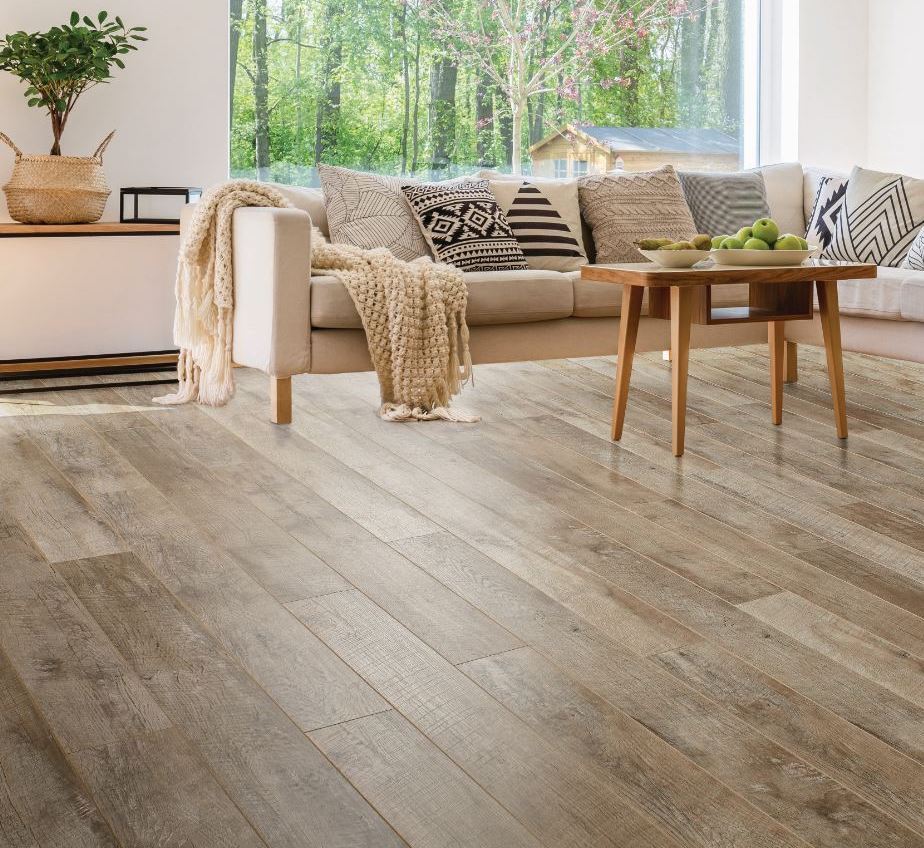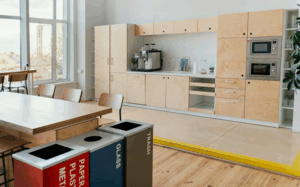Eco-Friendly Flooring Solutions Sustainable Choices for Stylish and Responsible Homes

As more homeowners embrace sustainable living, the demand for eco-friendly flooring has grown significantly. Today, it’s not just about aesthetics—flooring choices also reflect our commitment to the environment, health, and long-term durability. From Bamboo Flooring to reclaimed wood and recycled vinyl, modern sustainable flooring options allow you to create stylish, comfortable spaces without compromising your values. This guide explores popular eco-friendly flooring solutions, their benefits, and tips for selecting and maintaining them in your home.
Why Choose Eco-Friendly Flooring?
Eco-friendly flooring goes beyond green living; it offers practical and health-related advantages:
Environmental Impact
Traditional flooring materials like hardwood from non-sustainable forests or chemically treated laminates can significantly harm the environment. Sustainable flooring, on the other hand, uses renewable resources, recycled materials, or low-impact manufacturing processes, reducing carbon footprint and conserving natural resources.
Indoor Air Quality
Many conventional flooring materials release volatile organic compounds (VOCs), affecting indoor air quality. Eco-friendly alternatives, such as natural bamboo or cork, are typically low in VOCs, creating a healthier home environment.
Durability and Longevity
High-quality sustainable flooring is often highly durable. Bamboo Flooring, for example, is harder than many hardwoods, while recycled vinyl and composite materials offer long-lasting wear resistance. Choosing sustainable floors can reduce replacement frequency, further minimizing environmental impact.
Aesthetic Versatility
Modern eco-friendly flooring comes in a wide range of colors, textures, and patterns. Whether you prefer the natural grain of bamboo, the sophisticated sheen of terrazzo, or the rustic charm of reclaimed wood, sustainable options can suit virtually any design style.
Popular Eco-Friendly Flooring Options
Bamboo Flooring
Bamboo is one of the most popular sustainable flooring materials. It grows rapidly—often reaching maturity in just 3–5 years—making it a renewable resource. Bamboo flooring is not only eco-friendly but also durable, moisture-resistant, and visually appealing. It can mimic the elegance of traditional hardwood while offering greater resilience.
Cork Flooring
Cork is harvested from the bark of cork oak trees, which naturally regenerate after harvesting. This material is soft underfoot, naturally insulating, and offers excellent sound absorption. Cork is ideal for bedrooms, playrooms, or living areas where comfort and warmth are priorities.
Reclaimed and Engineered Wood
Reclaimed wood comes from old buildings, barns, or factories, giving new life to materials that would otherwise go to waste. Engineered wood combines thin layers of real wood over a sustainable core, offering a similar appearance to traditional hardwood but with less environmental impact. Both options provide timeless beauty and durability.
Recycled Vinyl and LVT Flooring
Luxury Vinyl Tiles (LVT) made from recycled materials are increasingly eco-conscious. They are durable, easy to maintain, and available in designs that mimic wood, stone, or ceramic. Recycled vinyl flooring reduces landfill waste while delivering a stylish, practical flooring solution for kitchens, bathrooms, and high-traffic areas.
Terrazzo Flooring
Terrazzo Flooring is a composite material made from marble, glass, or other aggregates combined with cement or resin. Modern terrazzo often incorporates recycled materials, making it a sustainable and visually striking choice. Its durability, low maintenance, and customizable designs make it suitable for both residential and commercial spaces.
Tips for Choosing the Right Eco-Friendly Flooring
When selecting sustainable flooring, consider the following:
Durability: High-traffic areas require materials like bamboo, engineered wood, or recycled vinyl, while cork or softer woods are better suited for low-traffic zones.
Maintenance: Some eco-friendly floors need regular sealing or polishing, while others, like LVT and cork, are low-maintenance.
Style and Color: Consider the overall interior design—natural wood and bamboo offer warmth, while terrazzo and LVT provide contemporary or patterned options.
Sustainability Certification: Look for FSC-certified wood, GREENGUARD-certified vinyl, or other eco-labels to ensure the product meets environmental and health standards.
Budget: While some sustainable floors may have a higher upfront cost, their longevity and low maintenance can make them a cost-effective investment over time.
Maintaining Eco-Friendly Flooring
Proper care ensures your flooring remains beautiful and durable for years:
Regular Cleaning: Sweep or vacuum to remove dirt and grit that can scratch surfaces.
Avoid Harsh Chemicals: Use mild, eco-friendly cleaners to maintain the integrity of the material.
Protect from Moisture: Even naturally moisture-resistant floors like bamboo should avoid prolonged water exposure.
Rotate Furniture and Rugs: This prevents uneven wear and preserves the floor’s appearance.
Conclusion
Eco-friendly flooring proves that sustainable choices don’t mean sacrificing style or comfort. From the renewable elegance of Bamboo Flooring to the artistic appeal of Terrazzo Flooring and the practicality of recycled vinyl, modern sustainable options offer versatility, durability, and environmental responsibility.
Investing in eco-friendly flooring Dubai is not only a reflection of personal style but also a commitment to a healthier home and planet. By selecting sustainable materials, maintaining them properly, and integrating them thoughtfully into your design, you can create beautiful, responsible spaces that stand the test of time.
Sustainable flooring is more than a trend—it’s the future of home design, combining aesthetics, practicality, and environmental consciousness in every square foot.







